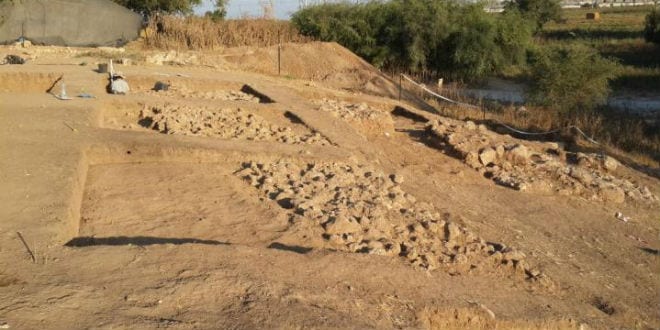Archeologists have been digging at Tell es-Safi in southern Israel for over two decades but the finds uncovered in the past season have them convinced the site is the location of Biblical Gath.
“I’ve been digging here for 23 years, and this place still manages to surprise me,” Aren Maeir, a professor of archaeology at Bar-Ilan University who leads the expedition in Gath told Haaretz. “All along we had this older, giant city that was hiding just a meter under the city we were digging.”

The site has hosted human civilization at many stages ranging from an Arab village evacuated in 1948 and a medieval Crusader castle. Archeologists began digging in 1996 but never found evidence of a city standing at the time that a young shepherd named David faced off against a heavily armored Philistine giant from the city of Gath.
But archaeologists are now sure that the city at Tell es-Safi was inhabited by the Philistines as far back as 5,000 BCE. Researchers have yet to find any conclusive evidence naming the site explicitly as Gath but Tell es-Safi is the best candidate.
“No comparably colossal structures are known in the rest of the Levant from this period—or even from the later incarnation of Philistine Gath,” Maier told Haaretz.
The 11th-century BCE city was outstandingly large and would have covered an area of 123.5 acres.
This year, archaeologists focused on a terraced area of the section of the city. They discovered that the terraces were resting on massive fortifications of walls four meters thick. They also discovered larger buildings made of huge stone boulders and fired bricks. Based on pottery discovered at the site, they dated the city to the 11th century BCE or possibly earlier.
This establishes Gath as a major regional power already in the early Iron Age in a manner consistent with the Biblical narrative. The settlement was destroyed by the Aramean King Hazael around 830 BCE as described in the book of II Kings.
Though many archaeologists assert that the Biblical account of Goliath is fictitious, in 2006, Maier presented his find of the “Goliath Inscription”: a Philistine inscription from the mid-ninth century BCE, the oldest ever discovered, which was found at Tell es-Safi. The inscription included two names, the first consists of four Semitic letters: TWLA [Hebrew font, alef-lamed-vav-tav], which Maeir said may be the equivalent of the name Goliath. Although it was written with Semitic letters, the name was known to be Philistine.
In his report, the archaeologist insisted that the inscription could not be referring to an actual historical person named Goliath.
“Maeir stresses that the Goliath of the inscription from Gath is not the Biblical Goliath,” the report read. “Most scholars regard the Goliath story as legend rather than history. The inscription does, however, give a real-life context to the story, and it demonstrates that the name Goliath was probably in circulation in Gath about a century or so after the legendary battle between David and Goliath, according to the Biblical chronology.




